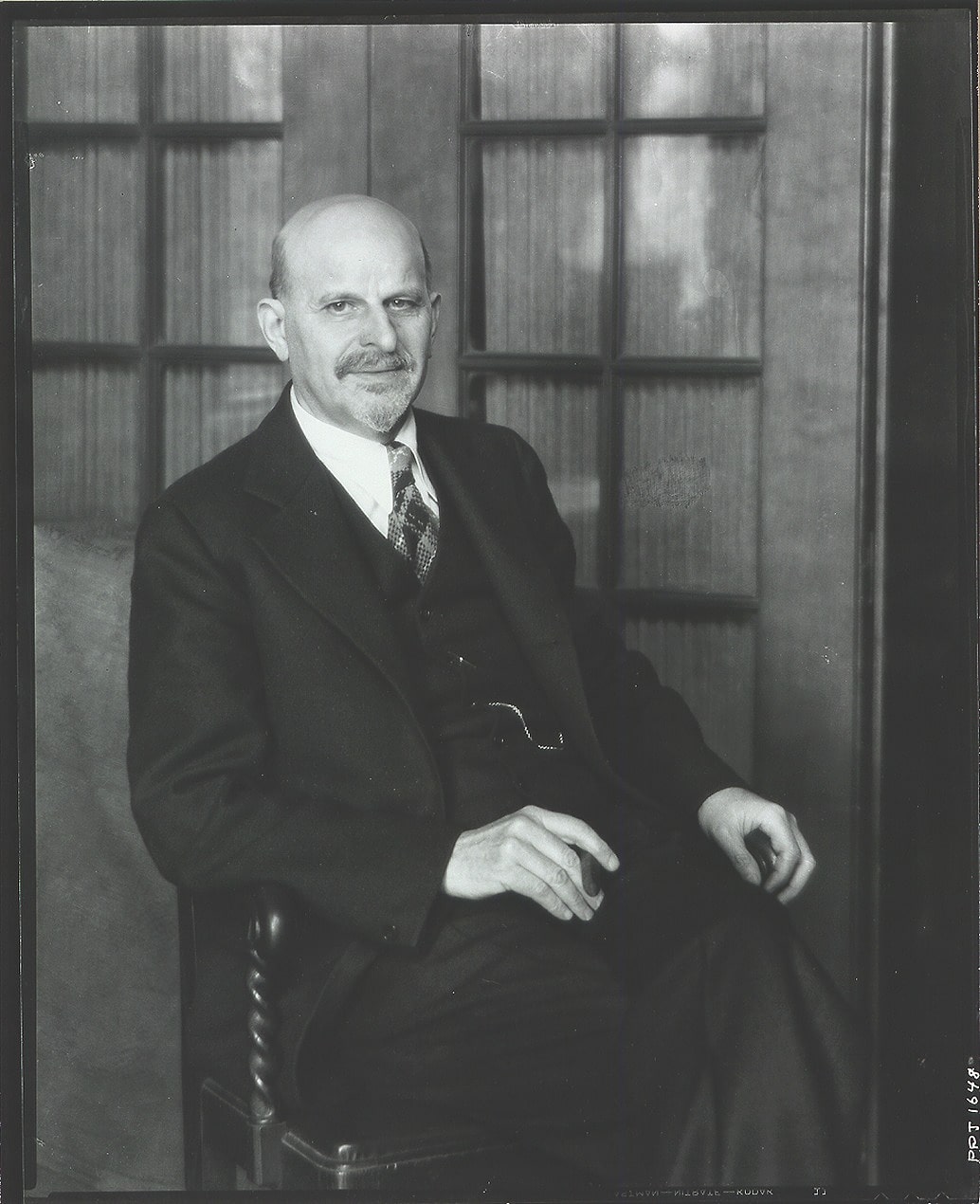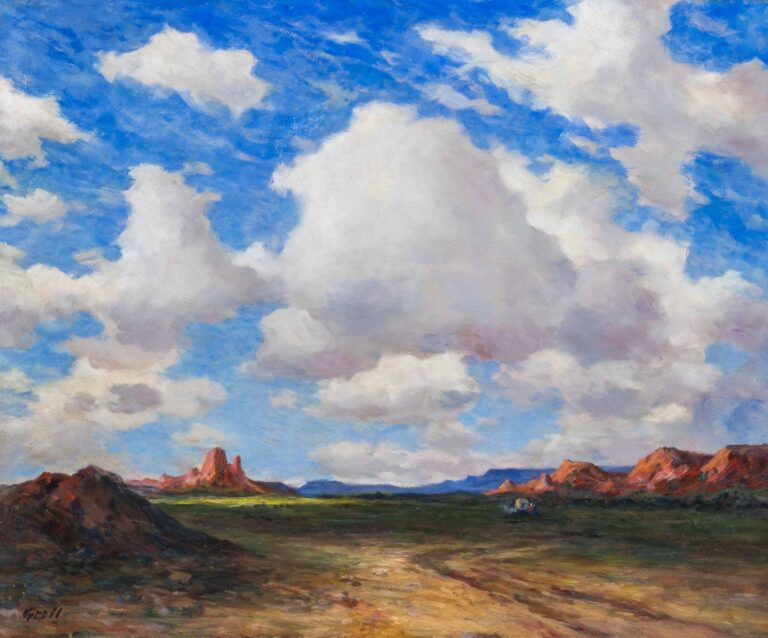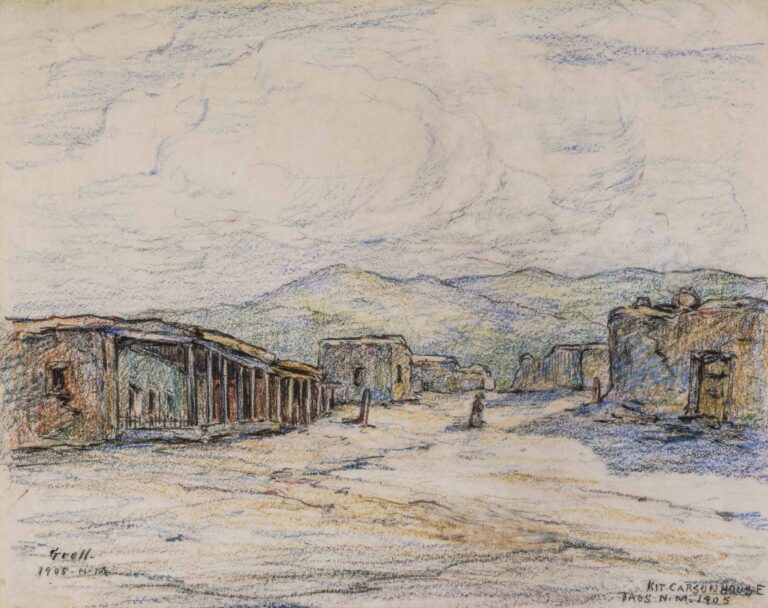An East Coast-based and European-trained artist, Albert Lorey Groll became a much admired, successful painter of the Southwestern landscape. Groll was part of the first wave of European and European-American artists to venture west and participate in what scholar Joseph Traugott has termed the “culture rush,”1 capturing images of new—to them—places, peoples and cultures.
His career as a Western American artist began in 1904, when he accompanied Brooklyn ethnologist Stewart Culin on an expedition to the territories of Arizona and New Mexico. On that trip he was introduced to Lorenzo Hubbell, owner of the Ganado Trading Post (now known as the Hubbell Trading Post). One of the desert scenes he painted on that trip, titled Arizona, won Groll a gold medal at the Pennsylvania Academy of the Fine Arts in January 1906 and “created a furor when it was exhibited in New York” six months later.2 The artist wrote to Hubbell that his Western paintings “have made a decided hit, both artistically and financially; in fact, my visit to the Southwest has been my lucky stars.” Groll promptly returned to New Mexico that same year to visit Laguna Pueblo, this time taking along his friend and colleague from the Royal Academy in Munich, William Robinson Leigh. Groll is credited with introducing Leigh, who would become another famous Western American artist, to the Southwest. Moreover, as he continued to make frequent trips to and prolifically paint the West, Groll is widely, though not universally, credited for founding the Santa Fe art colony, with the Santa Fe New Mexican reporting in 1923 that “It is said that it was not until Mr. Groll visited Santa Fe that artists came out to New Mexico’s capital to make their residence.”3
Over the course of four decades, Groll made a name for himself painting vast skies and towering cloud formations on visits to the Grand Canyon, Yellowstone National Park, Hopi Pueblo, Taos, Gallup, and beyond. One reviewer commented in 1922 that “A. L. Groll takes the desert for his subject and paints it under the cloud dotted blue sky which the very mention of his name recalls.”4 And that reputation only grew. By the 1940s, he was being heralded as “the greatest of American sky painters.”5 In addition to achieving broad popularity, his status and legacy as a founding Western American artist was cemented when he was made an affiliate member of the exclusive Taos Society of Artists. Groll’s career developed in lock-step with the Western American art movement, and also represents the origins and formation of that movement.
In 1941, Groll donated at least three artworks to Gallup’s Federal Art Center for the purposes, as reported in the local newspaper at the time, of forming “a nucleus for a projected permanent museum and art centre [sic] here.” The article goes on to explain that Groll has been “inspired by the gorgeous colors of the skies and also in rock formations near Gallup.”6






